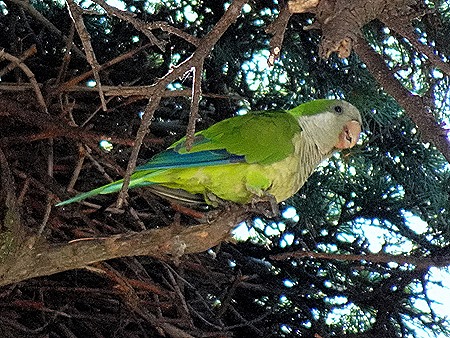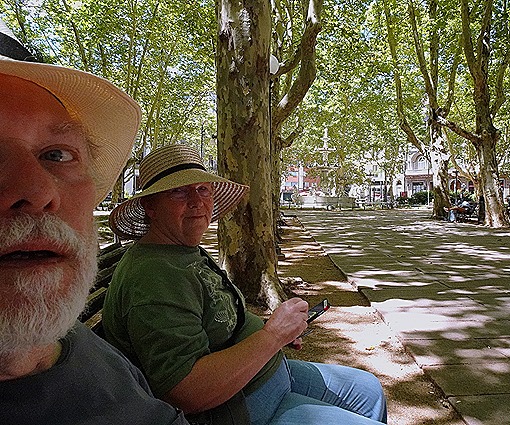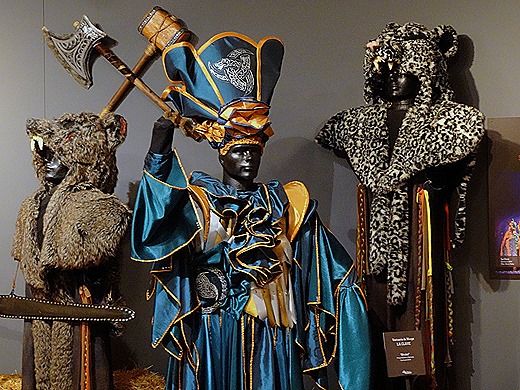Montevideo, Uruguay (2019)
February 17 found us in Montevideo, the capital & largest city (1.4 million) of Uruguay. Founded in 1826, Montevideo is located near where the Rio de la Plata enters the Atlantic Ocean. It Is a city of diverse architecture and a relaxed atmosphere, an excellent city for walking. Which is what we did.
We have encountered Admiral Graf von Spee twice in earlier episodes, in the Falklands and Robinson Crusoe Island. Montevideo was the site of a famous 1939 incident, in the second month of World War II, involving a German war ship named after him. After the “Battle of the River Plate” against three British warships, the Graf Spee was effectively forced into the harbor of Montevideo while the British ships (one of which was effectively out of commission) guarded the river’s exit to the ocean. Uruguay was neutral at that time, though friendly to the British, and the rules of war gave the Germans only 72 hours to either leave the harbor or be taken into custody for the duration of the war. A disinformation operation by the British convinced the Graf Spee’s captain, Hans Langsdorff, that several more ships had joined the two guarding the river, so having suffered significant damage in the battle he decided he could not break out of the harbor. Rather than allow the ship to be interned by the Uruguayans, who probably would have allowed British access to it, he decided to scuttle the ship. After offloading all but a skeleton crew he sailed out three miles into the estuary, set explosives around the ship on a delayed fuse, then abandoned the ship in an Argentine boat. The ship’s explosion was spectacular and, because the water depth was only 36 feet, its antenna ended up sticking out of the water, where we believe it can still be seen, although we haven’t seen it. Captain Langsdorff killed himself in his hotel room a couple of days later.
As you leave the port there is a small garden of artifacts, one of which is the anchor of the Graf Spee.
We walked through the old city, an attractive area of palm trees, public art and old buildings with sculptural architectural details, which is really characteristic of the city as a whole. But it was Sunday morning and the streets were eerily empty of people.
We came to the Plaza Zabala, named for the founder of Montevideo, Bruno Mauricio de Zabala. In the center is an equestrian statue of Zabala. Standing on our veranda on the ship this morning, Rick was startled by a whole flock of parakeets flying right by our stateroom. We have seen parakeets in cages before, of course, but never a flock of these colorful birds in the wild. Unfortunately, it happened too fast to get the camera for a picture and it never recurred. But here in Zabala plaza we did see some wild parakeets high in the branches of a tree. Some brown birds were busily eking out a living on the ground, but we don’t know what they are called.
We proceeded on to Plaza Constitucion, the first plaza built in the city and named for the Spanish constitution of 1812. This is our second visit to Montevideo and last time there was a lively flea market covering most of this plaza.
https://baderjournal.com/2012/02/13/montevideo-uruguay/
But that only happens on Saturday and this time our visit was on Sunday, so the park was quiet and serene, at least in the morning. It is a nice place to sit on a bench under the trees and relax. In the center is a fountain covered with sculptures that we were told during our last visit was a memorial to the establishment of the city’s water and sewage system in the 19th century.
Along one side of the plaza is the Montevideo Metropolitan Cathedral. Built between 1790 and 1804 on the location of an older brick church that opened in 1740, the Cathedral is dedicated to the Immaculate Conception.
Plaza Independencia is the central plaza of Montevideo. It sits between Ciudad Vieja (the old city) and downtown Montevideo. A replica of one of the gates to the old walled city sits on the original gate’s foundation at one side of the plaza, and the town’s main drag, 18 de Julio Avenue, begins on the other side. It was first built in the 1830’s after the town decided in 1829 to scrap its walls and extend the city into an area beyond that they called the new city.
In the center of the plaza is a large equestrian statue of Jose Artigas, leader of the original independence movement in the early 1800’s. We encountered another statue of him in Punta del Estes. Beneath this statue, which was erected in 1977, is a mausoleum containing his remains.
On one side of the plaza is the Estevez Palace. Built in 1873, it served as the office of the president of Uruguay from 1890 to 1985. It now houses a museum of the presidency. Next to it is the Torre Ejecutiva, where the president’s offices are now located.
Just off the plaza is the Teatro Solis, Uruguay’s most important theater. It opened in 1856 and was renovated at the end of the 20th century. We were hoping to tour the theater, but we didn’t have any Uruguayan currency and they don’t take credit cards. Maybe next time. On the far side of the plaza, where the 18 de Julio avenue begins, is the Palacio Salvo. At 330 feet in height it was the tallest building in South America when it was completed in 1928. It was originally intended to have a lighthouse on top where the antenna is now. This building dominates the plaza and is considered a symbol of Montevideo.
We left the plaza to the left of the Palacio Salvo and walked down 18 de Julio Street. You will not be surprised to learn that we walked all the way to the public library, which was a pretty good walk on a hot day. But along the way was an interesting mix of modern and old buildings, many with beautiful sculptural details in their architecture.
We also encountered two plazas on our way up the avenue. In the middle of Plaza Fabini is a fountain with a large sculpture called El Entrevero, depicting a fight among gauchos and Indians at very close range. Plaza de Cagancha, which dates back to 1840, was named after an important battle against forces from Buenos Aires. In the center is the Pillar of Peace, erected in 1867. When we were there this plaza was gaily decorated with multicolored flags, probably for a parade or holiday celebration.
We finally reached the National Library of Uruguay, which sadly was closed (probably because it was Sunday). Founded in 1815, the library has been in this building since 1955. It has around a million books along with tens of thousands of other materials in its collection. In front are statues of Cervantes & Socrates. The woman standing in front, looking disappointed that she couldn’t go in after walking all that way to see it, is Mary.
We were pretty tired from all the walking in the hot sun so we headed back toward the ship the same way we had come. We passed some yellow flowering trees next to the library and after traversing Plaza Independencia again we walked up a pedestrian street in the Ciudad Viejo that was full of vendors. On the way we encountered a bronze fellow who looks like he hangs out all day in this café with just a cup of coffee. After the long walk we stopped in Constitution Plaza to rest on one of the benches near the fountain we saw this morning.
We returned to the port area along several streets we hadn’t walked in the morning. More interesting buildings and a small plaza near the water containing a lot of wall art.
Carnaval is usually associated with Rio de Janeiro in Brazil but Uruguay has a significant carnaval as well, lasting through much of January and February. We were there in February, but if there were any carnaval events that day we didn’t see them (of course, we weren’t there in the evening). Carnaval in Uruguay has a history extending back more than 100 years and there is a museum in the port area dedicated to it. We visited it, in a fairly nondescript pink building, and it was well worth seeing.
Although the signage was all in Spanish, which we can’t read, the exhibits were very colorful and creative. We are told that the galleries were each dedicated to a distinct aspect of carnaval, and it was clear that some were historical relating to carnavals in years past, but that’s about all we can tell you. But the pictures tell the real story of this museum, especially some of the wild masks and costumes.
One more stop before the ship was for shopping at Acatras del Mercado, a store we really liked on our first visit here. We finally found it and it didn’t disappoint, full of eclectic arts and crafts. As you can see in the picture we didn’t leave empty handed. And these guys are wizards at packing things for travel.
So that was it for Uruguay. After dinner we retired to sleep while our ship moved up the river to another country, Buenos Aires, Argentina.





















































































Leave a comment